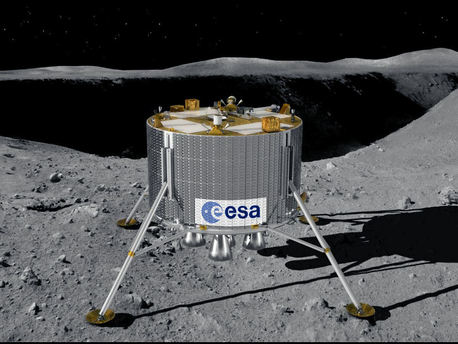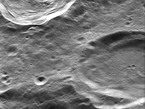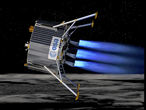Europe explores the Moon
Next step for ESA’s first Moon lander
 © ESA
|
The ESA's lunar lander mission aims to land in the mountainous and heavily cratered terrain of the lunar south pole, possibly in 2018. The region may be a prime location for future human explorers because it offers almost continuous sunlight for power and potential access to vital resources such as water-ice. The ‘Phase-B1’ study is going on under the leadership of EADS-Astrium Bremen and some of the key technologies will be developed and tested for the first time. The project will be presented to ESA’s Ministerial Council meeting in 2012 for full approval.
- » 1 - The first mission
- » 2 - 18-month effort begins in Berlin today
- » 3 - From a design concept to hardware reality
The first mission
The mission aims to land in the mountainous and heavily cratered terrain of the lunar south pole in 2018. The region may be a prime location for future human explorers because it offers almost continuous sunlight for power and potential access to vital resources such as water-ice.
To reach the surface safely, the lander must precisely navigate its way to a mountain peak or crater rim, carefully avoiding boulders and steep slopes before gently setting down to take in one of the most spectacular views in the Solar System.
The Moon is a favoured target for the human exploration missions outlined in the ‘Global Exploration Strategy’ by 14 space agencies around the world. The strategy supports international space exploration and calls for further studies of the Moon and Mars – places where humans will one day live and work.
Europe explores the Moon
Next step for ESA’s first Moon lander
 © ESA
|
The ESA's lunar lander mission aims to land in the mountainous and heavily cratered terrain of the lunar south pole, possibly in 2018. The region may be a prime location for future human explorers because it offers almost continuous sunlight for power and potential access to vital resources such as water-ice. The ‘Phase-B1’ study is going on under the leadership of EADS-Astrium Bremen and some of the key technologies will be developed and tested for the first time. The project will be presented to ESA’s Ministerial Council meeting in 2012 for full approval.
- » 1 - The first mission
- » 2 - 18-month effort begins in Berlin today
- » 3 - From a design concept to hardware reality
The first mission
The mission aims to land in the mountainous and heavily cratered terrain of the lunar south pole in 2018. The region may be a prime location for future human explorers because it offers almost continuous sunlight for power and potential access to vital resources such as water-ice.
To reach the surface safely, the lander must precisely navigate its way to a mountain peak or crater rim, carefully avoiding boulders and steep slopes before gently setting down to take in one of the most spectacular views in the Solar System.
The Moon is a favoured target for the human exploration missions outlined in the ‘Global Exploration Strategy’ by 14 space agencies around the world. The strategy supports international space exploration and calls for further studies of the Moon and Mars – places where humans will one day live and work.








